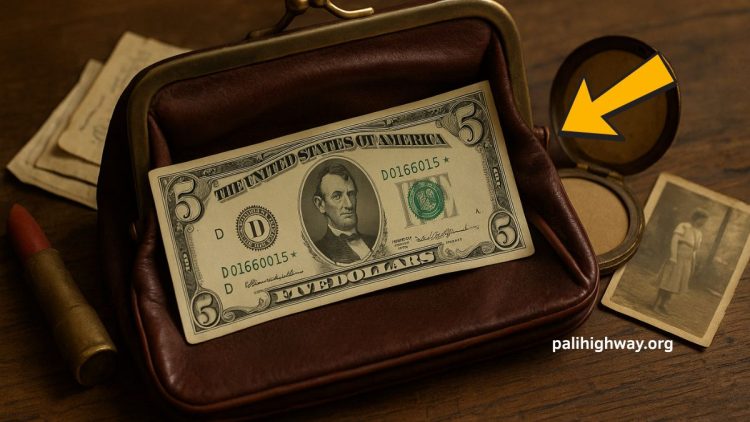An extraordinary $5 star note has recently captured the attention of collectors after being discovered in a vintage purse tucked away for decades.
This rare piece of American currency, dating back to an early series, has been appraised at a staggering $37,500. Such finds underscore the hidden wealth that can lie unnoticed in everyday items for years.
What is a Star Note?
A star note is a special type of U.S. banknote issued as a replacement for notes that were misprinted or damaged during production. These notes are identifiable by a star symbol printed at the end of the serial number.
Because of their limited production and distribution, star notes are significantly rarer than standard-issue bills, making them highly sought after by collectors.
Details About the Rare $5 Star Note
The $5 star note found in the purse belonged to an older series, likely issued during the mid-20th century. Its incredible condition — crisp, clean, and free of heavy folds — contributed to its high appraisal.
A combination of rarity, excellent preservation, and a low serial number helped push its value into the five-figure range.
Key Factors Behind the $37,500 Valuation
Several critical factors contributed to the impressive appraisal of this rare note:
| Factor | Impact on Value |
|---|---|
| Star Serial Number | Indicates rarity due to being a replacement note |
| Condition | Near-uncirculated, with minimal handling or folds |
| Age | From an early, highly collectible series |
| Low Serial Number | Serial numbers like 0000-series are especially valuable |
| Market Demand | Strong demand for high-grade star notes among collectors |
Breakdown:
- Star Symbol: Boosts collectability immediately.
- Pristine Condition: Paper fibers intact, sharp corners, no discoloration.
- Low Serial Number: Collectors pay premiums for lower numbers like 00000045*.
- Historical Significance: Older star notes are harder to find in good condition.
Why Star Notes Are Valuable
The value of a star note lies in its rarity. Replacement notes are printed in smaller batches, and even fewer survive decades later in excellent condition. Notes from earlier series, especially those dating back to the early 20th century, are even rarer today.
High demand among collectors drives up auction prices, particularly when a note combines several desirable features, as seen with this $5 bill.
Recent Market Trends in Rare Currency
Rare currency, particularly star notes, has seen a surge in market value over recent years. As more collectors enter the field, and as pristine examples of vintage star notes become scarcer, values have steadily climbed.
The $37,500 appraisal is consistent with a growing trend where unique and exceptionally preserved notes command premium prices at auctions and private sales.
The discovery of a rare $5 star note valued at $37,500 serves as a thrilling reminder that extraordinary treasures often lie hidden in ordinary places. Whether tucked away in a vintage purse, an old drawer, or a forgotten box in the attic, unique collectibles can surface when least expected.
For collectors and casual finders alike, keeping an eye out for star notes and recognizing their unique markers could result in uncovering a fortune. Always examine your old bills closely—you might just hold history, and significant value, in your hands.
FAQs
How can someone tell if they have a star note?
Look at the serial number of the note. If there is a star symbol (★) at the end instead of a letter, it’s a star note.
What makes a star note valuable?
The combination of age, condition, rarity of the print run, and special serial numbers like very low or repeating digits makes a star note highly valuable.
Should I get my old currency appraised?
Yes, especially if the note has a star symbol, an unusual serial number, or is from a rare series. Appraisals can reveal hidden value.
